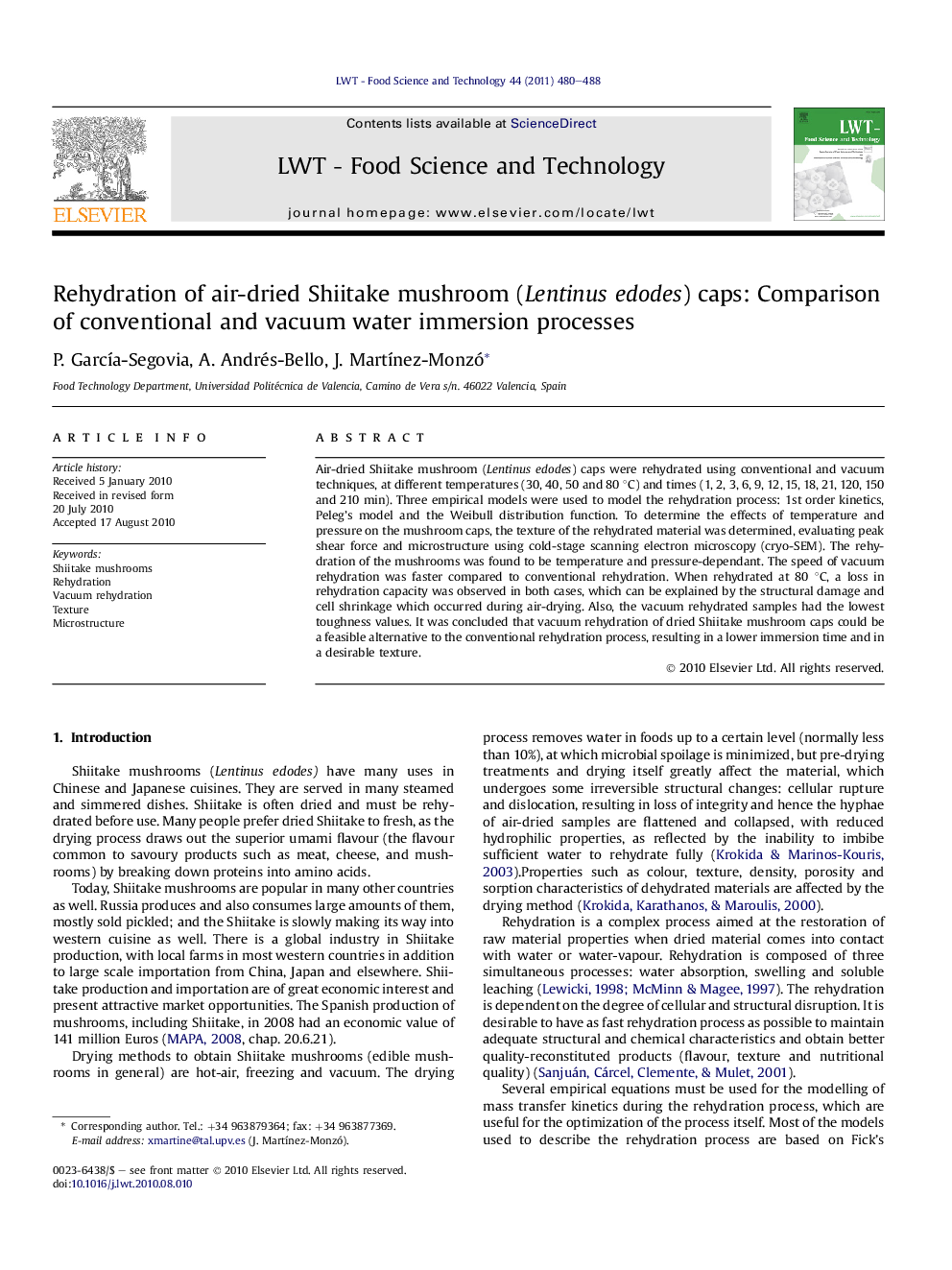| Article ID | Journal | Published Year | Pages | File Type |
|---|---|---|---|---|
| 4564046 | LWT - Food Science and Technology | 2011 | 9 Pages |
Air-dried Shiitake mushroom (Lentinus edodes) caps were rehydrated using conventional and vacuum techniques, at different temperatures (30, 40, 50 and 80 °C) and times (1, 2, 3, 6, 9, 12, 15, 18, 21, 120, 150 and 210 min). Three empirical models were used to model the rehydration process: 1st order kinetics, Peleg’s model and the Weibull distribution function. To determine the effects of temperature and pressure on the mushroom caps, the texture of the rehydrated material was determined, evaluating peak shear force and microstructure using cold-stage scanning electron microscopy (cryo-SEM). The rehydration of the mushrooms was found to be temperature and pressure-dependant. The speed of vacuum rehydration was faster compared to conventional rehydration. When rehydrated at 80 °C, a loss in rehydration capacity was observed in both cases, which can be explained by the structural damage and cell shrinkage which occurred during air-drying. Also, the vacuum rehydrated samples had the lowest toughness values. It was concluded that vacuum rehydration of dried Shiitake mushroom caps could be a feasible alternative to the conventional rehydration process, resulting in a lower immersion time and in a desirable texture.
